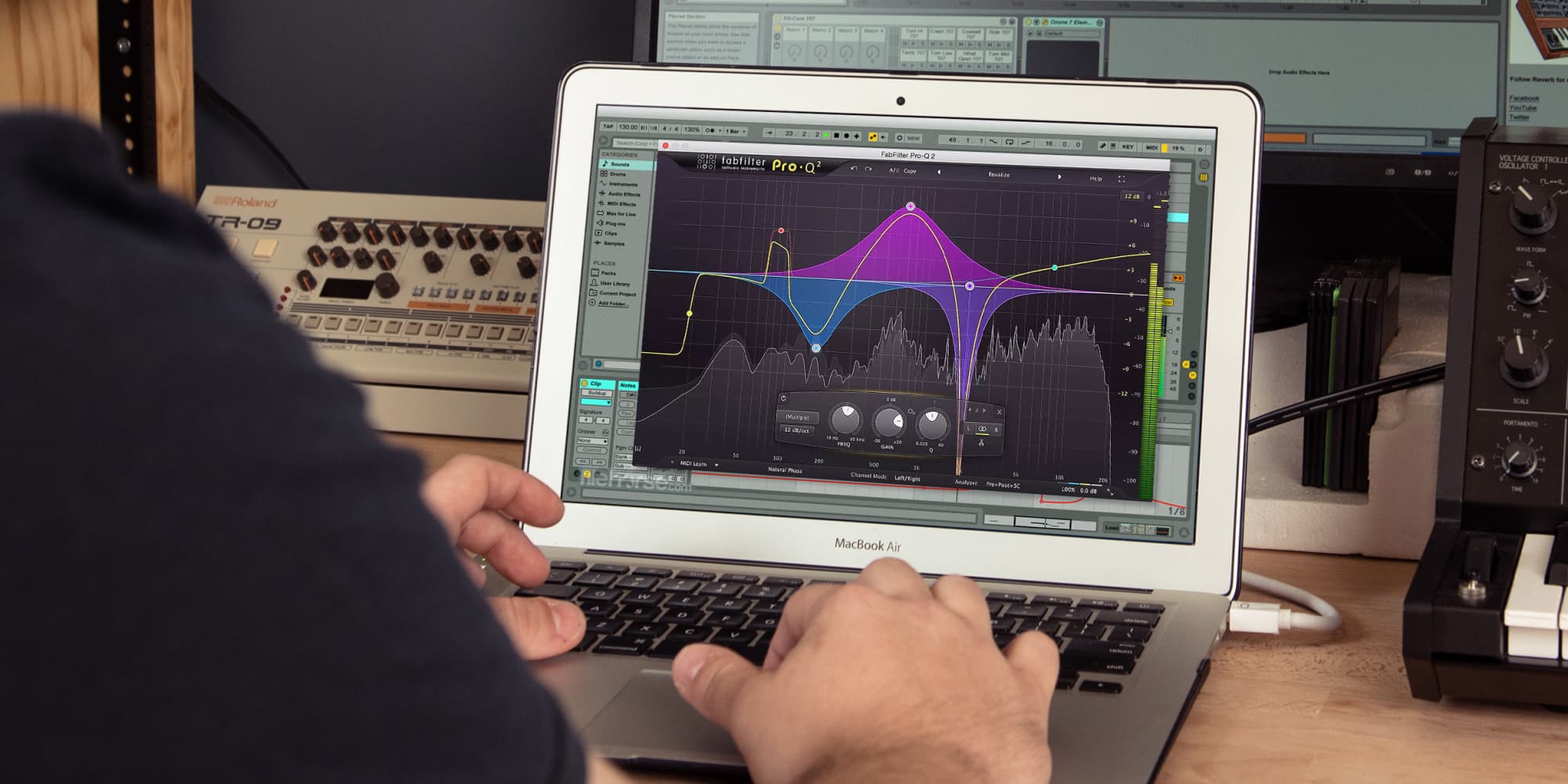With the coronavirus shutting down most of the live-music industry, we're all spending a lot of days and nights inside, trying to create music, keep our hopes up, and make the most of our time.
Whether beginning a new project or finishing some neglected demos, there's now ample time to record at home. Fortunately, it's never been easier to do so—as even chart-topping hits are being made in bedrooms, project studios, and other DIY setups.
Below, you'll find everything you need to know to make a record at home—along with plenty of inspiration for more creative techniques.
One important thing to note: If it sounds good, it is good. So, while you can spend days tweaking your setup—trying to find the best placement for your monitors and testing every possible mic position—don't let such particulars stand in the way of making music.
There's plenty of time to master the specifics. For now, we hope you jump around this guide. Learn a quick lesson and take inspiration where you can find it—but most importantly, just lay down some tracks.
Our Basics of Home Recording series takes you from start to finish through the process of assembling a basic home studio, recording various instruments and vocals, and getting things ready to mix and finalize in your DAW recording software.
Setting Up Your Studio with Monitors and Acoustic Treatment: In this post, we explore the basics of setting up the physical space you will use to record and mix music. Don't worry though, even if you don't have the space to treat a room, you can still glean some useful insights here.
Choosing Your First Audio Interface and DAW: This article explains the very basic equipment you'll need including an audio interface—the central brain of any digital recording system.
A Guide to Microphone Types and Placements: If you plan to record acoustic instruments, guitar amps, drums, or vocals, you'll need at least one microphone. Here we explore the different types of microphones and how to use them.
How to Record Acoustic Guitar and Vocals: If you're a singer-songwriter who plays guitar (or any other instrument really) take a look at this post for some guidelines on capturing guitar and vocals at the same time.
Mic'ing a Drum Kit from Start to Finish: Drum recording is a true art form with tons of variables to consider. This installment lays out the basics on how to capture the best sound from your kit.
How to Mic Your Electric Guitar Amp: Take a look here for the basics on how to properly mic a guitar amp. You wouldn't want all those pedals and juicy amp tone to go to waste, would you?
Recording Vocals in Your Bedroom: Read this article for insight on how to capture clear, vibrant vocal tracks even in the most humble of surroundings.
Basics of MIDI and MIDI Controllers: MIDI is a digital protocol used to interface all types of gear and software within a recording setup. In this post, we lay out the basics of what MIDI can do.
Tips to Prep Your Tracks for Mixing: Once you've recorded your instrumental and vocal tracks, spend a few minutes to clean up the files in your DAW before you start mixing.
Basics of Equalization: Most tracks will benefit from some frequency equalization. Here we explore the basic concepts and techniques involved with applying EQ as a first step in the mixing process.
Compression and Dynamic Processing: You may have heard of compression in the context of recorded music before. This post lays out what that actually means and how to use it.
Applying Reverb and Delay to Your Tracks: Today, all types of recording software give you the ability to apply basic effects like delay and reverb. Get the lowdown on how to do so in this post.


The above course should provide a good starting point for most home recording projects and home recording studios. Take a look at the articles in this next section for some more specific tips and advanced skills for recording and mixing different instruments.
- The Easiest Way to Record Your Synthesizer (and Other Electronic Recording Tips)
- The Easiest Way to Record Your Electric Guitar
- The Easiest Way to Record Your Acoustic Guitar
- 10 Ways to Mic a Guitar Amp
- How to Record Drums with 1, 2, 3, 4, or 5 Microphones
- How to Record an Upright Piano
- Essential Tips for Recording Bass Guitar
- How to Mix Guitars
- How to Mix Vocals
- How to Mix Drums
- Low-End Mixing for Bass Guitars, Synths, and Samples
- 6 Creative Ways to Enhance Your Keyboard Tracks
- Recording Great Drum Sounds in Small Spaces
- How to Record a Saxophone
Home Recordings
Once you have a good grasp of the fundamentals as outlined above, take some time to poke around these next articles. This selection includes tips on general improvements to sound and workflow, and other topics meant to expand your recording skillset.
- 10 Tips to Make Your Tracks Shine
- How to Combine 2 DAWs with ReWire
- 6 Things Everyone Should Know When Starting Out in Pro Tools
- 5 Home Studio Upgrades to Make Your Recordings Sound Less Like Demos
- How to Avoid "Bleed" in Your Home Studio
- Common Home Recording Stumbling Blocks and How to Avoid Them
- In What Order Should I Record My Tracks?
- How to Reamp Your Guitar Signal in a Recording Rig
- How to Use Effects Pedals as Rack Gear
- What is Compression and How Do I Use It?
There's no one way to make a record. If you find yourself unsure where to start or where to go next, look to these pieces for some inspired approaches to creating new sounds.
- Video: Recreating Prince's "Kiss" LinnDrum with an Acoustic Kit
- Video: Using Hardware Synths as Effects Processors
- The Unconventional Vocal Recording Techniques of 9 Innovative Singers
- Recording Abbey Road: The Beatles' First (and Last) Album of the Modern Era
- Crush Drum Tones with Contact Mics, Tape, and Compression




